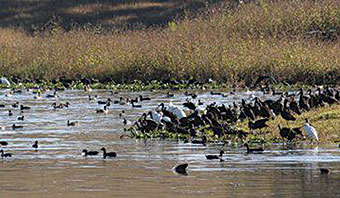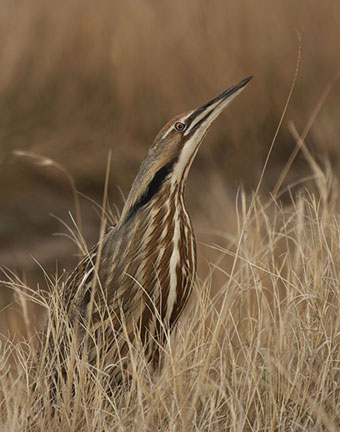Next story: Common Council Report
Thoughts on Cinco De Mayo
by Jay Burney

Lessons from Mexico on protecting habitat and sustaining biodiversity that can be applied to Buffalo’s Outer Harbor
Cinco de Mayo, the fifth day of May, is essentially a regional holiday celebrated in the Mexican state of Puebla, especially in its capital city of the same name. The holiday celebrates the defeat of the French army at the Battle of Puebla in 1862. It is not Mexican Independence Day, which is celebrated nationally on September 16.
At first glance, you might not think that Puebla and Buffalo have little in common. You would be wrong.
Puebla is Mexico’s fourth largest city, with a population of more than two million. It is located in the central eastern highlands between Mexico City, to the west, and Veracruz, on the coast to the east. There is evidence that Puebla is one of the oldest inhabited areas in all of the Americas, with settlements and pyramids dating back 12,000 years and evidence of humans going back almost 40,000 years.
The city was established in 1531 by the Spanish in order to establish a trade route between the coast and the interior areas around today’s Mexico City. That trade route was the site of some of the epic conflicts between the Aztecs and Cortez and his conquistadors. Later, the Battle of Puebla helped Mexico determine that it could become independent of European rule. Indeed, the human history of Puebla reflects the history of Mexico.
Buffalo was founded because of its strategic location as well. From early human history dating back almost 10,000 years and throughout the modern era, the place that we call home has been characterized by its location at the confluence of the Niagara River and Lake Erie. Buffalo has long played a central role in the movement of goods and people between the interior of the continent and the coast. Wars have been fought here and civilizations established. Buffalo’s significant role in the American Revolution and the War of 1812 also helped patriots in the United States believe that this country could become independent of European rule.
There is more that links our two areas. The physical geography of both places is a magnet for biodiversity, and in particular wildlife migration. The Niagara River Corridor Important Bird Area (NRIBA), anchored to the west by the gateway Times Beach Nature Preserve, has been recognized as critical, globally significant habitat for migrating and breeding birds. The IBA designation was applied because the area is part of the Atlantic Flyway, because it supports many species, and because there are serious threats to wildlife populations by its urbanized and built environment.

La Presa Valsequillo
Puebla also has a remarkable area that is a mecca for migrating birds. There is a 7,000-acre reservoir that hosts hundreds of species and hundreds of thousands of individual birds, especially during migration. Like the NRIBA, Valsequillo is home to species common, threatened, and endemic.
Like the Niagara Corridor, few locals are aware of the biological significance of this site. In fact, Valsequillo is surrounded by urban industry and untreated sewage is discharged into its waters—not unlike Lake Erie and the Buffalo and Niagara Rivers.
Remarkably, some of the same species and probably some of the same individual birds that migrate through our Niagara region may pass through Puebla and Valsequillo on their journeys between North America and Central and South America.
El guerro in Mexico
Jajean Rose was born in Buffalo, attended Montessori and City Honors. In 2009 he graduated with a master’s degree in planning from UB. Jajean is active in the promotion of the NRIBA, and is a dedicated Friend of Times Beach. From a young age he learned and worked to get the word out about the critical biodiversity of our region. Just after graduation from UB, he married Ana Hernandez Balzac, and together they joined the Peace Corps. They wanted to do something with ecology and conservation. They were assigned together to Puebla, working for SEMARNET, which is the Mexican government equivalent of the US Environmental Protection Agency.
When they first arrived and looked at maps, the Valsequillo reservoir caught Jajean’s attention. He wrote in his blog:
When I arrived in Puebla in November of 2010, I asked everyone I could about Valsequillo. What it was like, who lived there, what I could see if I went. I was more than disappointed by the responses. “Se murio la presa.” They said the reservoir was dead, too polluted to drink from, swim in, or even go boating on. The fish? They all died long ago. The birds? There aren’t any. The reservoir is nothing more than a smelly, toxic, mud hole.
Undeterred, he checked out the site in person. Over many visits he was astonished by what he found. While the reservoir was certainly a sewage lagoon and full of waste from nearby industry, it was teeming with life.
“The water was clear and blue,” he wrote. “Huge rafts of ducks were floating on its surface. Flocks of herons were wading in its shallows. Fishermen on little boats were pulling in the days catch. Farmers were collecting the last of the season’s harvest along its shores. No, the reservoir wasn’t dead. And I knew that I had to find a way to protect this incredible place.”
It was not easy. He had to convince his boss and nearly everyone involved with local, state, and federal government that it was worth spending Peace Corps time on. “I knew that if we worked at it we could find ways to turn the reality of this place from a perceived wasteland to one of the worlds more important ecological sites,” he wrote.
Not unlike Buffalo, not unlike Times Beach, not unlike the NRIBA.
Jajean knew early on that he could make a good case for conservation. Personal observations helped his list of birds jump from an initial 63 to more than 230, including rare and endangered species. He recognized that at least 60 endemic species found only in Mexico are found at Valsequillo. He found 27 federally protected species at risk of extinction. He found that Valsequillo is also an important part of the flyway for migratory aquatic birds; thousands of ducks, herons, and shorebirds can be seen in the reservoir during the winter.
He recognized and articulated that the wetland sustains recreation and tourism activities, and is surrounded by significant paleontological and archaeological sites.
He found legal strategies to protect the wetland. He concentrated on the Ramsar Convention, which is an international treaty between 160 nations designed to conserve critical wetlands. Ramsar sites are deemed important for their ecological, cultural, and economic values. There are 2,000 Ramsar sites recognized worldwide. Mexico has 140 Ramsar sites, but there are only a handful of urban Ramsar sites on the planet. In December 2010 he began applying for Ramsar status.
He met with government officials at the local, state, and federal levels, presented at community forums, and helped to organize a birdwatching club that focused on exploring and documenting the biodiversity of the site. He finished and submitted the Ramsar site nomination study. He received the support of his counterparts at SEMARNAT, Peace Corps staff, the local, state, and federal governments, as well as numerous community organizations, universities, friends, and his wife, to whom he gives tremendous credit.
Global recognition
On World Wetlands Day, February 2, 2012, Jajean was notified that Valsequillo and a large portion of its watershed had been designated as Mexico’s newest Ramsar site and was now identified as a “wetland of international importance.”
Today, all three levels of government are looking for a way to manage the site sustainably and have already used the designation to guide its long-term land use planning for the zone.
The Ramsar designation has already helped conservation efforts in Valsequillo. Just this past month the state government of Puebla designated a large portion of Valsequillo as a state park, the second state-managed protected natural area in Puebla. The Ramsar designation was the principal justification for the state park designation. The state park includes a mixture of public and private lands, much like Adirondack State Park in upstate New York. The state park designation will allow for a new set of land use regulations that will limit urban growth in the most ecologically important parts of the area around the reservoir.
In total, the Valsequillo Ramsar site is just over 90 square miles in size. The state park is slightly smaller, at approximately 50 square miles. To put this into perspective, the city of Buffalo is approximately 40 square miles.

You can see Mexico from here
The migratory aquatic birds that Valsequillo sustains during the winter are some of the same birds that we get to see in Buffalo during the spring, summer, and fall. These birds breed on wetlands in Buffalo and as far north as Canada and Alaska during warmer months; fly south to spend colder months in the southern United States, Mexico, Central America, and South America; and return north as temperatures warm again. The protection of wetlands further south allows us in Western New York to enjoy the birds that characterize our region.
Jajean writes, “WNY also has wetlands that need protecting. We are the stewards of the earth’s largest supply of freshwater, the Great Lakes. Niagara Falls, one of earth’s great natural wonders, is in our backyard.
There are countless other lakes, ponds, rivers, and streams in our region. Many of these could be Ramsar sites. The Times Beach and Tifft Farm Nature Preserves in downtown Buffalo, for example, include wetlands that sustain species of birds that are threatened, some of which nest in the reserves, and are refuge to countless migratory bird species.
Like Valsequillo, rapid urbanization, industrial contamination, inadequate sewage treatment, and invasive species threaten Western New York’s wetlands, the habitat they provide for wildlife, and the life-sustaining resources they provide us. What we do here in Western New York impacts Valsequillo. What we do in Valsequillo impacts Western New York. Our fates, as Mexicans and Americans, as Buffalonians and Poblanos, as citizens of one world, are tied together. Our global wetlands are a clear example of this. This is a good thing to contemplate this Cinco de Mayo.
Jay Burney is founder of the Learning Sustainability Campaign and Greenwatch. Greenwatch provides a forum for discussion of and promotes community literacy about issues related to ecology, sustainability, and biodiversity. Visit Greenwatch on Facebook.
blog comments powered by Disqus|
Issue Navigation> Issue Index > v11n18 (Week of Thursday, May 3) > Thoughts on Cinco De Mayo This Week's Issue • Artvoice Daily • Artvoice TV • Events Calendar • Classifieds |









 Current Issue
Current Issue